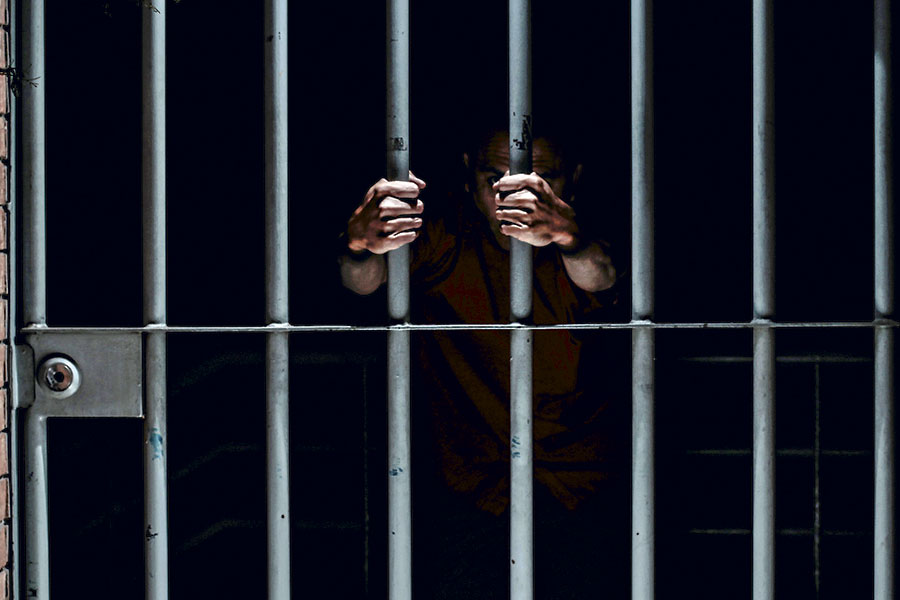FOLLOWING my previous column on “what is amiss with our Prisons Service,” it has since then provoked so many questions from my esteemed readers demanding to know how best we can salvage the once productive Prisons Service! It appears the Prisons Service is now over burdened by the new kind of clients emanating from the social political economic environment.
Hardly days pass by without reading the mafisadi stories before the court and end up in prisons either as remand prisoners or convicted ones. This was expected with the creation of the special court of Mafisadi; we knew very well what would be the impact and that we should as well have prepared the necessary infrastructure that would adequately handle such situation.
Let me not be mistaken for advocating soft treatment for mafisadi; far from that, I am thinking of counter measures of preventing contrabands such as mobile phones and other prohibited articles from getting in and out of prisons. One of the most felt punishments for prisoners is cutting off communication from their loved ones as such they will strive at any cost to restore this and that is where the Prison Service should outsmart them by using electronic measures to stop that.
As indicated earlier, the advent of technology has made it so difficult to manage smuggling into and out the prisons of prohibited articles without using the same technology. This influx of mafisadi in prisons has also an implication to the Prison Service in terms of the treatment programmes particularly the intervention programmes aimed at their rehabilitation.
Are these offenders really worthy of rehabilitation? If yes, are our rehabilitation programmes relevant to them or do we have new designed programmes that can address their corrupt attitudes? It is counterproductive to buddle them in prison without their useful tangible deployment. After all it is expensive to maintain them in prisons due to their life style essentially required to be observed.
And for those on remands mostly mafisadi are not supposed to work in prisons and have to spend most of their times idling on enforced idleness and as the sayings goes, “the idle mind is the evil’s man workshop,” We should not forget that whatever happens in prison is the reflection of what is happening outside and therefore our Prison System knowledge should be based on profession preferably with a division of physiology, sociology and other relevant disciplines.
It is no longer a question of height and a flat chest as a requirement for recruitment to Prison Service taking into account of the new clients we are having in our prisons. And that is why in the early years after independence the prison administration made a ‘need assessment’ as to what should be the cornerstone of prisoner’s punishment and found out at that time, the country was based on peasantry economy and that prisoners should be made to till the land.
The first indigenous Commissioner of Prisons O.K.Rugimbana (1962 -1967) devoted most of his time and thinking on introducing agricultural activities and opening new farms in order to train prisoners to become self-reliant citizens after serving their sentences. Rugimbana had a grand dream of dotting the whole of Tanzania with modern prison farms akin to commercial mechanized farms.
Open Prison Farms such as Songwe Mbeya, Mollo Sumbawanga, Kitai Songea, Kitengule Bukoba, Wami Mbigiri, Airport Arusha, Urambo Tabora were opened with Ranches and Dairy Farms at Ubena, Kingolwira, Mugumu, Kiabakari. Somehow politicians saw prisons as the nucleus of agricultural development in Tanzania. A few years later, in 1967, the Arusha Declaration came out speaking exactly the same language of uplifting peasant’s life, the Blue Print made clarion call: “Let’s be concerned with the peasant”.
Let it be underscored here that it was no surprise as Nyerere looked around for a person who could help him to mechanize peasant agriculture, he spotted Rugimbana. It was probably for this reason Rugimbana was moved to the Ministry of Agriculture and Cooperatives as the first indigenous Director of Production and Technical Services in 1967.
Segregation and classification of Prisons is globally considered to be the basis of sound management of Prisons Service. Emerging trend of white collar crimes after independence, Ubena Ranch Prison was established to cater for prisoners who could be trainable in managing ranches. Apparently not by design but by aptitude most of the educated prisoners were found suitable to undergo such intervention programmes at the Ubena Prison Ranch as a measure of addressing their criminal attitudes.
Kingolwira Prison Farm is one of the oldest prison facilities established in 1937 as a pilot project for European prisoners with long sentences, training them on commercial farming that would make them qualify for the government assistance after their sentences. However, the pilot project did not work when the 1944 -1945 war broke out.
Tanganyika used to get milk from Kenya but when war broke out, Kingolwira Prison Farm had to supply milk to the whole country. Therefore, the Kingolwira Prison Farm was turned into a Dairy Farming Institution to fill the vacuum created by lack of milk from Kenya. The first stock of 100 dairy cattle was sent to Kingolwira and the complex was highly mechanized and was capable of producing all milk by-products including ghee, butter, yoghurt etc.
Kingolwira Railway Station was improvised to provide facilities for handling milk safely to Dar es Salaam by train. Kenya resumed supplying milk to Tanganyika in 1956 but already Kingolwira had captured the market.
But when it became clear that Tanganyika will become independent, the European Prison Officers decreased the number of animals, slaughtered some and the supply of milk started to dwindle; instead they introduced the sisal plantations that supplied sisal fibre for manufacturing carpets. However, the fact remains that preparation were always made in Prison Service for any eventualities and not to be caught in surprise. Let’s do it again.



